- Home
- Edward Lee
Monstrosity
Monstrosity Read online
MONSTROSITY
EDWARD LEE
Smashwords Edition
NECRO PUBLICATIONS
—2014—
— | — | —
MONSTROSITY © 2002, 2014 by Edward Lee
Cover art © 2014 by Travis Anthony Soumis
This edition © 2014 Necro Publications
ISBN-13: 978-1-939065-30-8
Book design & typesetting:
David G. Barnett
Fat Cat Graphic Design
www.fatcatgraphicdesign.com
a Necro Publication
www.necropublications.com
This ebook is licensed for your personal enjoyment only. This ebook may not be re-sold or given away to other people. If you would like to share this book with another person, please purchase an additional copy for each person you share it with. If you’re reading this book and did not purchase it, or it was not purchased for your use only, then please return to Smashwords.com and purchase your own copy. Thank you for respecting the hard work of this author.
— | — | —
For Dave Barnett
— | — | —
As always, the author is in debt to many, but particular thank yous are due to: Don D’Auria., Doug Clegg., Rich Chizmar., Tim McGinnis., and Tom Piccirilli. I need to thank some of the staff at Bay Pines VA Med Center for seeing to it that I will live to write still more horror novels: Dr. Durr, Kent Bown, Steve in the ER, Dr. Lopez, and Dr. Nash. More thanks to Stephanie (for the lake and for stratifications of esoteria); Susan (for interesting shooter names) and R.J. (for disliking the Boston Red Sox as much as I do); Julie (for continuing to speak to me after reading CREEKERS); Jill; Amy & Scott (for stomaching a number of my books); Mikey, and the other cool folks at Philthy Phil’s. Thanks, too, to Tony and Kim at Camelot, and, as always, to Bob Strauss; and to Rob Stevens and Bruce Thomas.
— | — | —
Prologue
PART 1
Chapter 1
Chapter 2
Chapter 3
PART 2
Chapter 4
Chapter 5
Chapter 6
Chapter 7
Chapter 8
Chapter 9
Chapter 10
PART 3
Chapter 11
Chapter 12
Chapter 13
Chapter 14
Chapter 15
Epilogue
About the Author
More Edward Lee eBooks
— | — | —
Prologue
FEDERAL LAND GRID S27-0078
CENTRAL FLORIDA
JUNE 1995
The bodies lay in pieces. They’d been expertly dismembered.
And they were over 10,000 years old.
Professor Fredrick’s team had finally gotten the vault open an hour ago. It was Fredrick himself who’d ordered the MMD scan; the circle of stone benches he’d initially discovered were of a typical Ponoye congregational alignment. The Ponoye Indians were the rage now in archeological circles, and Fredrick was the one who’d discovered them. This dig should be the one that made him famous.
I’m almost seventy now, he thought. I’ve earned the right to be famous, damn it. Yes, he’d discovered this obscure offshoot Indian tribe but no one had yet discovered one of their locations of worship. Fredrick had long learned that the secrets of ancient races were always unlocked by analysis of their system of religion. He could feel his old pulse jumping with excitement.
“Lower,” he said into the microphone. “Ten more feet and I’ll be on the floor.”
He waited, hanging in the harness, for his command to be met. The flashlight swung around, revealing more brief slices of wonder. Fredrick couldn’t wait to kneel before them, to revel in them like a child at the foot of the Christmas tree. The excitement was overwhelming, his heart racing beneath the dusty khaki field shirt. Don’t have a heart attack, he warned himself. Have a heart attack tomorrow. But you’ve got to see what’s in this vault first…
His booted feet dangled in the air, just a few feet over what would probably turn out to be the most important find of his life.
Then his body began to rise. They were pulling him back up.
“Damn it, what are you doing?” he shouted into his mike. “Down! Down!”
But back up he went, reeled up and out of this new-found heart of darkness. Before he was fully out of the vault, however, his flashlight fell for one final moment back on the very first things he’d glimpsed:
The bodies. The dismembered bodies, preserved by time and happenstance to near perfection…
««—»»
“Sorry, Prof,” Dales said. Dales was Fredrick’s senior teaching assistant: young, brash, but very good. This was the third dig he’d accompanied Fredrick on, and the boy knew the ropes. He had the bad habit of stuffing Gummy Bears in his cheek like chewing tobacco, and he had a smart ass to go along with his academic prowess. But in secret, Fredrick could now almost regard him as a son, and he hoped the boy would go on in his much older footsteps.
Dales continued his hasty explanation as to why he’d so quickly extracted Fredrick from the belly of the cenote.
“It’s the testing equipment. It’s all our stuff, remember? It’s from the college inventory. The feds may be paying for this dig but they’re not buying us any new testing gear.”
Fredrick stomped out of his lift harness, practically having a tantrum there in the dell. “What are you talking about?”
“The air probe.”
“What?”
“It’s a first series Becton-Dystal, Prof. It’s practically as old as…”
Fredrick’s baggy eyes narrowed at his associate’s clipped pause. He jabbed a finger. “You’re a cocky young punk, you know that? You were about to say it’s practically as old as me.”
Dales grinned through a mouthful of Gummy Bears. “Naw, Prof, I meant it’s as old as the hills—and let’s face it. That’s pretty much the same thing. And before you have your fourth coronary of your career, let me explain. When we first dropped the probe, it came back green, so then we dropped you in. After you’re down there, the probe goes red. The goddamn thing’s so old and rusty it was giving us a false positive, took five minutes for the real reading to log in the chromatograph. When you were down there, Prof, you were breathing a couple thousand parts per million of methane, CO2 , and radon. Five more minutes in that hole and you’d be dead…and I don’t care what the rest of the faculty says, Prof. The world’s better off with you than without you.”
Fredrick made a reciprocating gesture with his middle finger, but after a few grumbles and a quick cough, he said. “Good work, son. Thank you.”
Dales laughed. “So now I get an A on my thesis, right?”
“Don’t push it.” Fredrick finally shucked off the rest of the clumsy harness. A racket rose as several other enthusiastic students dropped the white vent hose into the hole. Dales feigned concern, grabbed Fredricks’ shoulders, and turned him away from the sight. “Don’t look, Professor. It’ll bring back traumatic memories—of your last colonoscopy!”
“You’re a regular comedian today, Dales. What we should do is throw you into that hole. Just sit down there and talk about yourself for five minutes—all that hot air will surely blow out any toxic fumes.”
“Hee-haw, boss! That’s a real knee-slapper!”
Fredrick frowned against the high sun. All the activity of the site was beginning to annoy him: the clatter of dredger engines, the trucks barreling in and out of the dell, the endless grate of shovels biting into stony earth. “How long will it take to vent?”
Dales sat down on an unearthed chunk of black granite whose divets indicated that it was probably once used as a beheading abutment. “Could be a lot of cubic yar
ds of space down there,” he pointed out. “You know the drill. How big is the cenote?”
The question duped him. “Impossible to say. I only caught a few brief glimpses with my flashlight before I was pulled back. I couldn’t even estimate as to the interior perimeter.”
Dales shrugged. “Could take an hour, could take a month.”
The possibility filled him with the most shocking despair.
He wanted to get back in there.
Now.
“And you’re sure you saw bodies?” Dales asked.
“Dismembered bodies,” Fredrick said. “Bodies dismembered at the hips and shoulders.”
“Hmm.” Dales thought about this. “Bones, you mean. Ossified imprints?”
“Limbs, incredibly well preserved. Essentially intact—”
“—after 10,000 years?” Dales went on. “Shit a brick, this is some co-inky-dink, huh? High nitrogen, an unadulterated thermal flux of methane and carbon dioxide, and since the cenote’s been so well-sealed, all the radonite gas the shale was leaking never vented out. Every archaeologist’s ultimate hard-on.”
Dales’ less-than-technical terminology proved accurate nonetheless. A monumental fluke had provided an absolutely pre-eminent environmental condition for archeological preservation. Simple good fortune had seen to it that the bodies in the cenote would be flawlessly mummified.
Ten millennia old, Fredrick realized. And still intact…
Dales was chuckling. “I can’t wait to see the looks on the faces of the schmucks who’ve been laughing at you all this time. I mean, Christ, this isn’t some peat bog in the Andes or a melted piedmont in Nepal. This in Florida, boss. You’ve discovered that an offshoot Indian tribe was practicing a systematized religion before any systematized religion existed. You kick ass, you know that? You fuckin’ rock.”
Though Fredrick appreciated the encouraging remarks—however coarse—he knew that none of his discovery would be accepted as credible if what he thought he’d seen in the vault turned out to be some optical illusion. Lower oxygen content could very easily account for such a hallucination. And at Fredrick’s age, so could wishful thinking, he supposed. But he felt so sure. He felt sure he’d seen the bodies, and he felt sure he’d seen the—
“What about the heads?” Dales asked now, as if intercepting a thought. But what an odd thing to ask. “Was it just the arms and legs separated from the torsos, or the heads too?”
“The heads too,” Fredrick enlightened.
“So you were right all along. All this time you’ve been saying that the Ponoye were ritually sacrificial.”
Fredrick saw his point at once, then quickly corrected: “Oh, no, I don’t think the bodies were sacrifice victims. They were laying askew on the vault’s floor. No pattern, no order. And they were priests.”
“You’re kidding me.”
Fredrick shook his head so vigorously some dust sifted out. “Their ritual dress had sufficiently oxidized, of course, but I could still make out the remnants very well. These men were wearing albs and stoles, intricate cassocks. There were four bodies, Dales, and I saw what appeared to be four headdresses oxidized on the floor as well.”
Dales winked. “Got’cha. Stupid me. The headdress doesn’t usually stay on the head when the head’s cut off.”
“Yes, and I don’t think they were cut off.”
Now Dales was beginning to lose some of his wit. “What, you mean they somehow came detached after mummification? A tremor, earthquake?”
“No, no, no,” Fredrick insisted, straining the memory of his vision. “I’m talking about the morphology of the heads—peri-mortal, not post-mortal. Just the way the necks looked. The heads weren’t cut off, Dales. They were pulled off.”
Dales spat out his Gummy Bears and glared back at Fredrick. “Now you’re starting to freak me out. Usually it’s the priests who do the sacrificing. But you’re telling me that 10,000 years ago, someone went down there and sacrificed the priests?”
««—»»
Despite the sun’s fierce blaze, he shivered in the humid air. The site made him think of violations, of rape. A line of zealous students tore at the face of the ridge with 20-pound pickaxes. Others turned shovels around amorphous shapes of things that the last six days of excavation had raised from the oblivion of ages. Dust rose in billows. The hectic sound of metal striking rock rang as a familiar song. Fredrick had spent his life doing this: disgorging smothered civilizations from the thick skin of the earth. Yet he’d never felt this way before. He felt like a trespasser.
He looked down at his clay-flecked leather boots, the same he’d worn on countless digs. From Galli to Nineveh, from Jericho to Troy to Knossos. He abstracted, wanting to smile. He thought of himself as a specter of the future. All these cities, once great, had been predestined to be trod upon by Fredrick’s old boots a millennia later. Time buried. Whole civilizations locked in layers of clay. He was walking on worlds, and some day, he realized, someone like him would walk on his.
But not today…
Today Fredrick would be the herald between the present and the dimmest past.
Alone now, he stared at the ingress.
Cenote, he thought. Yes, what any one else would simply call a hole in the ground, men like Fredrick would call a cenote. Cenotes and ziggurats. Tower and tunnel. Up and down. They were universal. All ancient civilizations conformed to some similar spiritual ideology.
Heaven was up. Hell was down.
The Tower of Babel, for instance, was a ziggurat, a sanctified structure whose deliberate height meant to bring the priests closer to heaven.
Fredrick, at this isolated, tropical dell, had found the counterpart—a ceremonial cenote—whose depth meant to bring the priests closer to the underworld.
Closer to devils.
The Ponoyes. The obscure Indian tribe’s ancient tabletries spoke of a holy cenote—the cennana—and it looked like Fredrick had found one. Just like the ancient cenotes of, say, Mesopotamia, except—
This cenote had to have been dug 5000 years earlier than the oldest Mesopotamian cenote, Fredrick thought.
Proof of an ascensional religious system existing eight thousand years before the birth of Christ?
In North America?
It’ll turn the modern archaeological community on its ear…
The image in the flashlight beam snapped back to his mind’s eye; Fredrick was sure the bodies in the vault were Ponoye priests. The cenote’s unlikely environment had preserved their regalia perfectly: the pectoral jewelry. The armlets and wristbands. The headdresses—more like the peaked miters of the Assyrian smoke-diviners than anything that could be thought typical of Native American ceremonial garb. The Ponoyes were unique in many ways: first, they had an exclusive, intricate written language, and were transcribing religious script at about the same time the Egyptian aristocracy was writing on pressed papyrus. Second, they wrote hieretically: only the clergy were allowed to partake in writing. Third, they weren’t nature worshippers. They were descentional theologics.
In other words, the Ponoyes did not worship a god on high. They worshiped “lower” gods.
Fredrick’s bottled-up excitement was making him shake now. His old joints began to ache just from pacing back and forth before the ringed safety rail around the cenote’s mouth. After a while he realized that the sun was beginning to set and he hadn’t even realized it. One student quickly loped by, waving him over: “Chow truck’s here, Professor. Come and get it!” and then the rest of the excavation team began to break off. Suddenly, the site fell silent save for the steady chug of the ventilator’s small gas-powered engine. Only when he was totally alone did Fredrick notice the old-series air-probe’s display panel.
The light was green.
It had been hours now; surely the cenote’s vault had vented by now. Dales was nowhere to be seen, standing in the chow line no doubt.
Damn it, Fredrick thought.
He couldn’t wait any longer.
He began to stra
p himself into the descent harness.
“To hell with the winch,” he was muttering to himself next. “I’ll do it the good old fashioned way…” Safety precaution and simple common sense had eluded him; he was done screwing around. A couple dozen yards below his feet, straight down into the ground, a 10,000-year-old mystery was waiting for him with open arms.
It would wait no longer.
The drop line tightly gripped to his chest, Fredrick began to lower himself down into the hole. The metal bites on his boot tips helped him steady his pace, and in a few moments, the old man was working his way down the narrow sinkhole with the skill of an expert. Careful of the edge, he reminded himself when he’d gone along for a while. The “topwall”—the ceiling—of the vault should be coming up soon.
His boot tip scuffed down, measuring, feeling for the end. Don’t screw up now, you old crank! he warned himself. True, in his past, he’d rappeled countless hundreds of times, but he was seventy now. Even a free-drop of only a few feet could break a hip or blow out a knee.

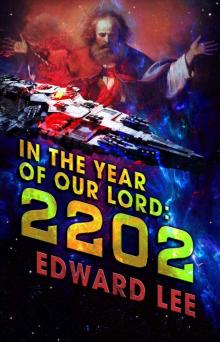 In the Year of Our Lord 2202
In the Year of Our Lord 2202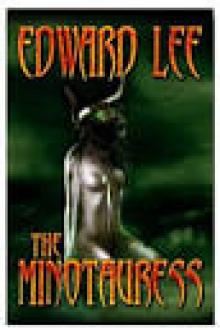 The Minotauress
The Minotauress Terra Insanus
Terra Insanus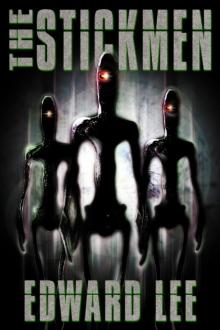 The Stickmen
The Stickmen Flesh Gothic by Edward Lee
Flesh Gothic by Edward Lee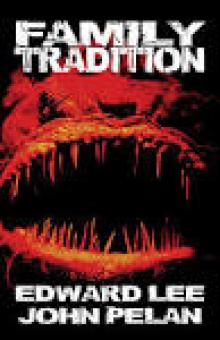 Family Tradition
Family Tradition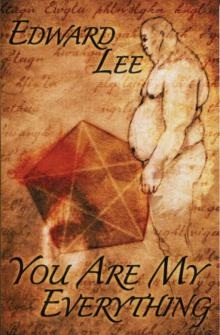 You Are My Everything
You Are My Everything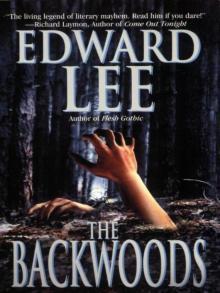 The Backwoods
The Backwoods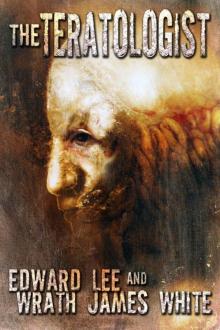 The Teratologist
The Teratologist Smoke and Pickles
Smoke and Pickles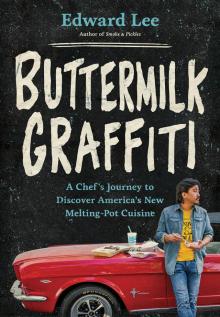 Buttermilk Graffiti
Buttermilk Graffiti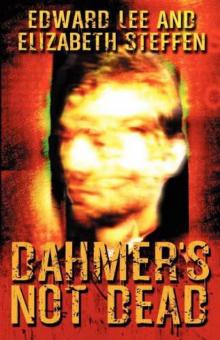 Dahmer's Not Dead
Dahmer's Not Dead Quest for Sex, Truth & Reality
Quest for Sex, Truth & Reality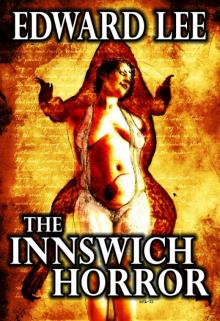 The Innswich Horror
The Innswich Horror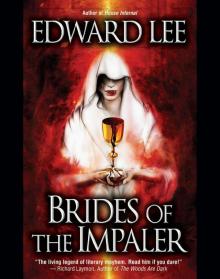 Brides Of The Impaler
Brides Of The Impaler Goon
Goon Trolley No. 1852
Trolley No. 1852 Sacrifice
Sacrifice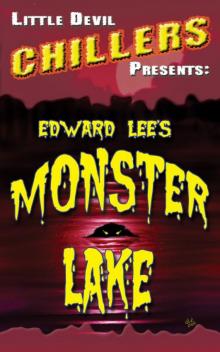 Monster Lake
Monster Lake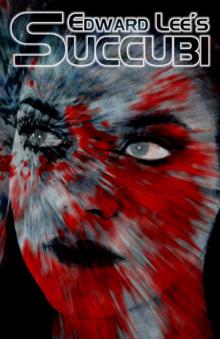 Succubi
Succubi Lucifer's Lottery
Lucifer's Lottery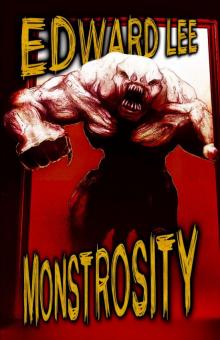 Monstrosity
Monstrosity The House
The House The Dunwich Romance
The Dunwich Romance Operator B
Operator B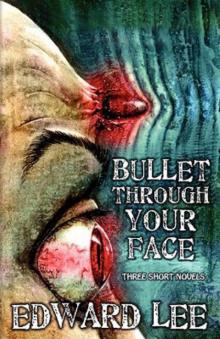 Bullet Through Your Face (improved format)
Bullet Through Your Face (improved format)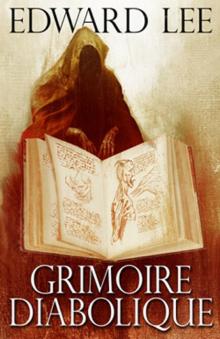 Grimoire Diabolique
Grimoire Diabolique Room 415
Room 415 The Messenger (2011 reformat)
The Messenger (2011 reformat)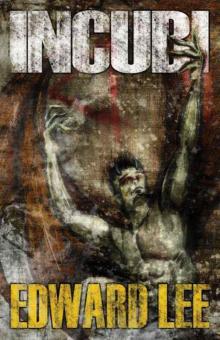 Incubi
Incubi The Black Train
The Black Train House Infernal by Edward Lee
House Infernal by Edward Lee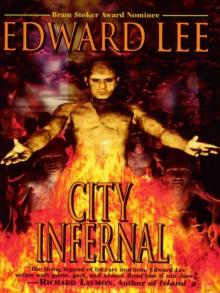 City Infernal
City Infernal Creekers
Creekers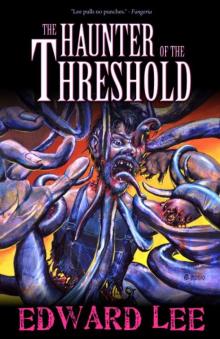 The Haunter Of The Threshold
The Haunter Of The Threshold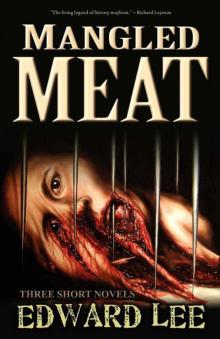 Mangled Meat
Mangled Meat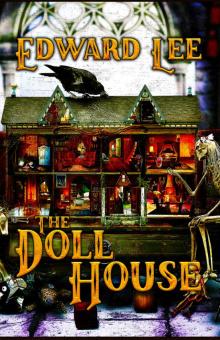 The Doll House
The Doll House Header 2
Header 2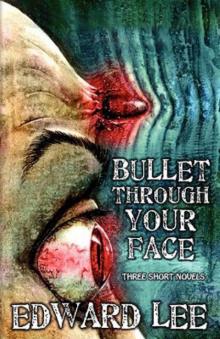 Bullet Through Your Face (reformatted)
Bullet Through Your Face (reformatted)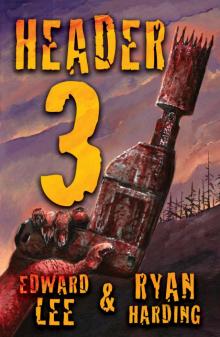 Header 3
Header 3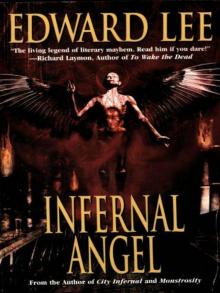 Infernal Angel
Infernal Angel Pages Torn From a Travel Journal
Pages Torn From a Travel Journal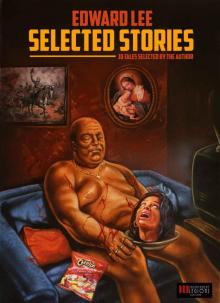 Edward Lee: Selected Stories
Edward Lee: Selected Stories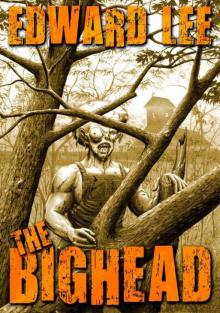 The Bighead
The Bighead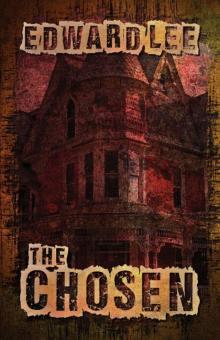 The Chosen
The Chosen